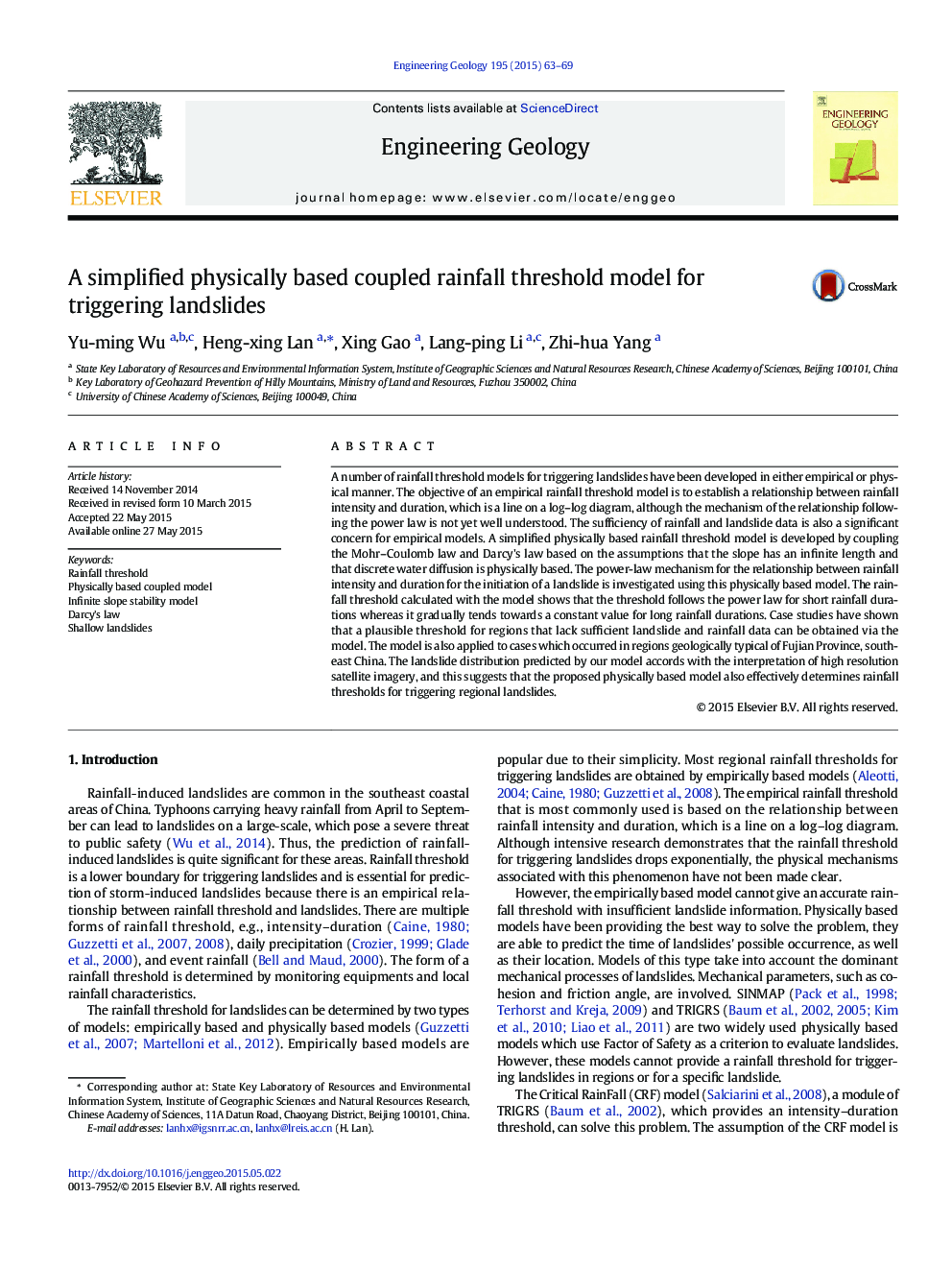| Article ID | Journal | Published Year | Pages | File Type |
|---|---|---|---|---|
| 4743282 | Engineering Geology | 2015 | 7 Pages |
•A rainfall threshold model couples the Mohr–Coulomb law and Darcy's law.•The model can predict threshold on different time and spatial scales.•Threshold curve follows the power law for short rainfall duration.•Threshold curve tends towards a constant value for long rainfall duration.•The model is applicable to both site specific and regional landslides.
A number of rainfall threshold models for triggering landslides have been developed in either empirical or physical manner. The objective of an empirical rainfall threshold model is to establish a relationship between rainfall intensity and duration, which is a line on a log–log diagram, although the mechanism of the relationship following the power law is not yet well understood. The sufficiency of rainfall and landslide data is also a significant concern for empirical models. A simplified physically based rainfall threshold model is developed by coupling the Mohr–Coulomb law and Darcy's law based on the assumptions that the slope has an infinite length and that discrete water diffusion is physically based. The power-law mechanism for the relationship between rainfall intensity and duration for the initiation of a landslide is investigated using this physically based model. The rainfall threshold calculated with the model shows that the threshold follows the power law for short rainfall durations whereas it gradually tends towards a constant value for long rainfall durations. Case studies have shown that a plausible threshold for regions that lack sufficient landslide and rainfall data can be obtained via the model. The model is also applied to cases which occurred in regions geologically typical of Fujian Province, southeast China. The landslide distribution predicted by our model accords with the interpretation of high resolution satellite imagery, and this suggests that the proposed physically based model also effectively determines rainfall thresholds for triggering regional landslides.
